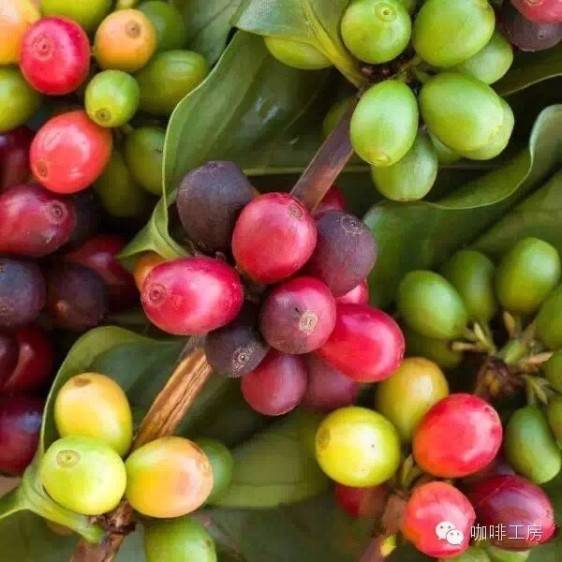The Origin of Kaddura Variety Caturra Flavor expression and characteristics of Kaddura Coffee

For professional baristas, please follow the coffee workshop (Wechat official account cafe_style)
Variedad encontrada en Minas Gerais, Brasil, posiblemente originada como una mutaci ó n de un gene dominante del cafe Bourbon.
The Kaddura variety was found in the Brazilian state of Minas Gerais and may have originated from a mutation in a dominant gene such as the bourbon variety.
El Caturra se caracteriza por ser de porte bajo, tiene entrenudos cortos, tronco grueso y poco ramificado, y ramas laterales abundantes, cortas, con ramificaci ó n secundaria, lo que da a la planta un aspecto vigoroso y compacto.
Kaddura is characterized by a short plant, with short stem knots, stout and less branched, and dense and short lateral branches, with its second branches, which gives the plant a vibrant and sturdy appearance.
Con respecto al Bourbon, en la variedad Caturra las hojas son m á s grandes, anchas y oscuras, los frutos son Taub é n de mayor tama ñ o, el sistema radical est á muy bien desarrollado y es de mayor extensi ó n y densidad.
As for bourbon, the Kaddura variety has larger leaves, wider and darker leaves, larger fruits, and a well-developed root system.
Full-bodied fruit and sour berries, with a bit of a sting in the throat, but a hint of blueberries in the finish.
La adaptabilidad de esta variedad es muy amplia, particularmente en cuanto an altitud y el potencial productivo es muy sobresaliente, ya que a pesar de su tama ñ o peque ñ o la cualidad de presentar entrenudos muy cortos y ramificaci ó n secundaria abundante, posibilita su alta productividad.
The adaptability of this variety is very broad, especially for altitude and production potential, even though it is small fruit coffee, it shows ultra-short branches and dense second branches in quality, thus realizing its high yield.
Se puede sembrar a una densidad de 5.000 plantas por á rea, aunque en condiciones muy favorables para el cultivo, la densidad puede ser un poco mayor.
Although it is very beneficial to the planting of this variety under suitable conditions, it can be planted at a density of 5,000 plants per hectare, and the density can also be slightly higher.
There are also "yellow cherries" like bourbon varieties.
Important Notice :
前街咖啡 FrontStreet Coffee has moved to new addredd:
FrontStreet Coffee Address: 315,Donghua East Road,GuangZhou
Tel:020 38364473
- Prev

Is Italian coffee culture the same as we know it? Shouldn't you add sugar to your coffee?
Professional barista communication please follow the coffee workshop (Wechat official account cafe_style) in Italy, the image of Coffee House is strong, how do you enjoy coffee? There are many popular coffees in Italy, such as espresso and coffee latte, but their preferences are slightly different from those of Italians. Let's take a look at the Italian coffee culture and its characteristics here. Authentic
- Next

The countries with the most Philharmonic pressure are introduced in detail with the famous flavor and culture of Norwegian coffee.
For the exchange of professional baristas, please follow the coffee workshop (Wechat official account cafe_style). The vast nature of Scandinavia is beautiful Norway. Needless to say, it is a country famous for its coffee state. It is also known as the high quality of coffee there are many kinds, some coffee lovers I think we are those who also think that one day, I want to go to Norway. we
Related
- Beginners will see the "Coffee pull flower" guide!
- What is the difference between ice blog purified milk and ordinary milk coffee?
- Why is the Philippines the largest producer of crops in Liberia?
- For coffee extraction, should the fine powder be retained?
- How does extracted espresso fill pressed powder? How much strength does it take to press the powder?
- How to make jasmine cold extract coffee? Is the jasmine + latte good?
- Will this little toy really make the coffee taste better? How does Lily Drip affect coffee extraction?
- Will the action of slapping the filter cup also affect coffee extraction?
- What's the difference between powder-to-water ratio and powder-to-liquid ratio?
- What is the Ethiopian local species? What does it have to do with Heirloom native species?

